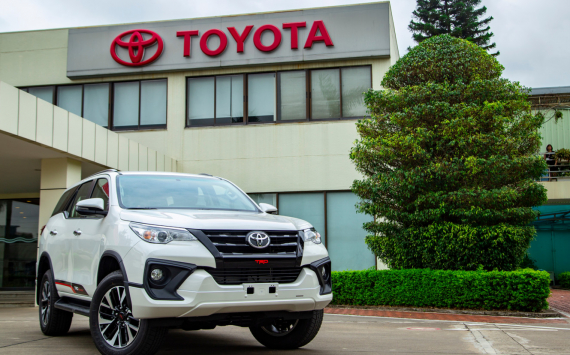Description
Daihatsu Motor Co., Ltd. , commonly known as Daihatsu, is a Japanese automobile manufacturer and one of the oldest surviving Japanese internal combustion engine manufacturers well known for building three wheeled vehicles. It is well known for its range of smaller kei models, passenger and off-road vehicles. The headquarters are located in Ikeda, Osaka Prefecture. The company has been a wholly owned subsidiary of the Toyota Motor Corporation since August 2016.
Electrics and hybrids
Daihatsu has had a long-running development program for electric vehicles, beginning with the production of "pavilion cars" for the 1970 Osaka World Expo and continuing with the production of golf carts and vehicles for institutional use, such as the DBC-1. An electric version of the company's Fellow Max kei car also followed, the beginning of a series of prototypes. The 1973 oil crisis provided further impetus and at the 20th Tokyo Motor Show (1973) Daihatsu displayed a 550 W electric trike (TR-503E), the BCX-III electric car prototype and daihatsu's own EV1 . Daihatsu showed more prototypes through the 1970s, for instance at the 1979 Sydney Motor Show, and then joined the Japanese Electric Vehicle Association's PREET program (Public Rent and Electronic Towncar) with an electric version of the Max Cuore kei car. The program allowed registered users access to the cars with a magnetized card and charged according to mileage used.
In November 1974, Daihatsu released the Hallo (ES38V), a tilting trike powered by an electric motor and two 12V batteries.
In December 2011, Daihatsu released the Pico EV Concept, a quadricycle powered by an electric motor.
The current hybrid vehicle technology is called Daihatsu Mild Hybrid System, and is mainly used in the Hijet/Atrai Hybrid-IV.
Motorcycles
In 1973, Daihatsu presented an electric tilting trike at the Tokyo Motor Show. This entered production in 1975 as the Hallo. Daihatsu also released a petrol powered version using a 50 cc two-stroke engine.
























